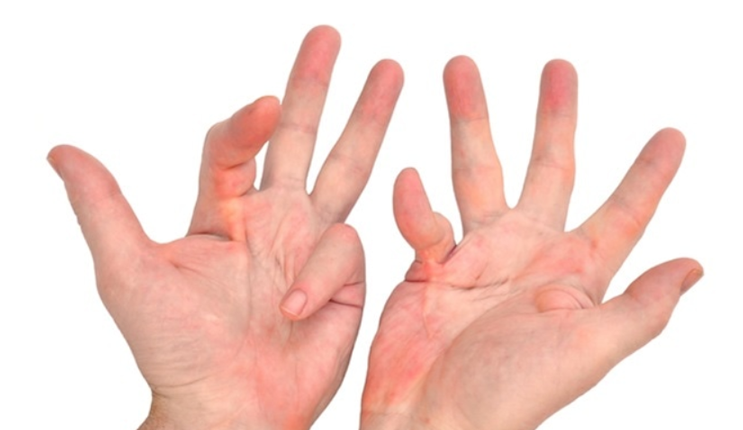Dupuytren's Disease is a hand deformity that usually develops over years. The condition affects a layer of tissue underlying the skin of your palm. Knots of tissue form under the skin – eventually forming a thick cord that can pull one or more fingers into a bent position.
Affected fingers cannot be fully straightened, which can make daily activities such as putting your hands in your pocket, wearing gloves, or shaking hands difficult.
Dupuytren's disease mainly affects the two fingers furthest from the thumb and is most common in older men of Northern European descent. A number of treatments are available to slow the progression of Dupuytren's contracture and relieve symptoms.
Dupuytren's Disease Symptoms
Dupuytren's disease typically progresses slowly over years. The condition usually begins as a thickening of the skin on the palm of your hand. As you progress, the skin on your palm may appear puckered or dimpled. A solid piece of tissue may form in your palm. This lump may be tender to the touch, but it is usually not painful.
In the later stages of Dupuytren's disease, cords of tissue form under the skin of the palm and may extend into your fingers. As these cables tighten, your fingers can be pulled against your palm, sometimes severely.
The two fingers farthest from the thumb are most commonly affected, but the middle finger may also be involved. The thumb and index finger are rarely affected. Dupuytren's contracture can occur in either hand, but one hand is usually more severely affected.
Dupuytren's Disease Treatment
Treatment methods for Dupuytren's Disease are as follows.
Operation; This is the most commonly used treatment for advanced cases. It can be done when you have limited use of your hands. During Dupuytren's contracture surgery, the surgeon makes an incision (incision) in your hand and removes thickened tissue. This can increase the mobility of your fingers. Some people have contractures. They may need to have surgery again.
Steroid shot (injection); If a lump is painful, a steroid injection may help relieve the pain. In some cases, it can stop your condition from getting worse. You may need repeated injections.
Radiation therapy; This treatment is not common in the U.S. Low-energy X-rays are directed at the nodules. This works best in the early stage of the disease. It can soften nodules and help prevent contractions from happening.
Enzyme injection; This is a newer, less invasive procedure performed by specially trained surgeons. Your doctor injects a medicine into the area to numb the hand. The enzyme is then injected into the tissue lump. Within a few hours, the enzyme breaks down and dissolves the tough bands. This allows the fingers to straighten when the cord is attached by the surgeon, usually the next day.
Needle aponeurotomy; This is another new, less invasive procedure. Medicine is injected into the area to numb the hand. The surgeon uses a needle to divide the diseased tissue. No incisions are made.






